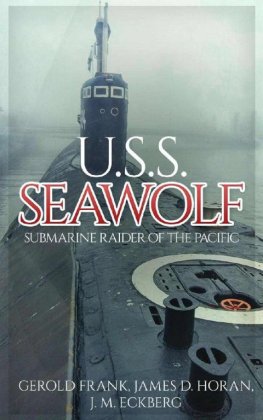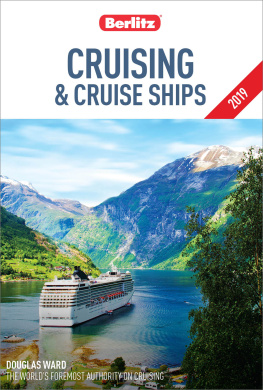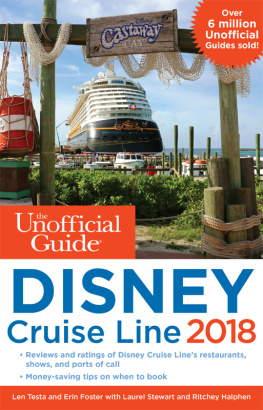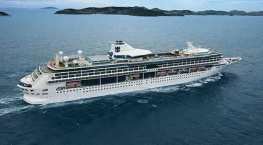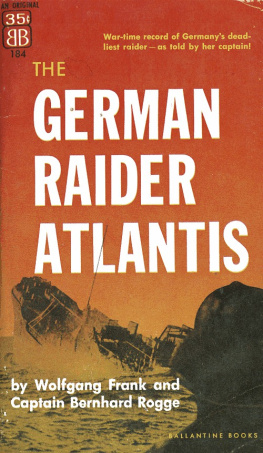This edition is published by PICKLE PARTNERS PUBLISHINGwww.picklepartnerspublishing.com
To join our mailing list for new titles or for issues with our books picklepublishing@gmail.com
Or on Facebook
Text originally published in 1939 under the same title.
Pickle Partners Publishing 2015, all rights reserved. No part of this publication may be reproduced, stored in a retrieval system or transmitted by any means, electrical, mechanical or otherwise without the written permission of the copyright holder.
Publishers Note
Although in most cases we have retained the Authors original spelling and grammar to authentically reproduce the work of the Author and the original intent of such material, some additional notes and clarifications have been added for the modern readers benefit.
We have also made every effort to include all maps and illustrations of the original edition the limitations of formatting do not allow of including larger maps, we will upload as many of these maps as possible.
THE CRUISE OF THE RAIDER WOLF
BY
ROY ALEXANDER
PREFACE
The Cruise of the Raider Wolf is not intended as another war book; it is the story of one of the strangest and greatest sea adventures of modern times.
The Wolf has become a legendary figurea name connected with strange happenings at sea; but to most people it is only a name. The actual cruise was a shadowy, mysterious affair; and for many reasons the history of the cruise has remained equally vague. Briefly, this raider slipped out of Germany in 1916, and for fifteen months roamed the seas of the world depending for fuel and food on the captures she made.
Her very existence depended on these captures not becoming known. Ships encountering the Wolf therefore simply disappeared, their fate unknown. The raider roamed the Atlantic, Indian, Pacific oceans, even touched the Arctic and Antarctic seas. And she capped this unparalleled cruise by running the blockade back to Kiel.
Incidentally, the Wolf was the only enemy warship to enter Australian or New Zealand waters. She mined the coasts of both these countries.
After the raiders return to Germany there was a world-wide blaze of publicity. The reception of the Wolfs men in Berlin was one of the outstanding war events in the German capital. Then the Wolf disappeared from public notice as quickly as she became famous. One reason for this was that Captain Nerger, the raiders commander, was not a publicity seeker and was not in particularly high favour in Germany. It was necessary to receive him with honour after he brought his ship back from such a cruise, but after that he was quietly moved to an obscure post and was heard of no more.
The author was a prisoner aboard the raider for the last nine months of the cruise.
The Introduction of the book is a brief account of the raiders career. The succeeding chapters are written from a personal angle. The author has no anti-German bias; nor is he pro-German: he writes as events appeared to him.
The book includes an appendix on the cruise of the raider Seeadler . The author writes of that ship as it concerned the Wolf.
There is also an appendix on that South Atlantic rendezvous for German raiders and their supply ships, the island of Trinidad, and the use made of it by them.
INTRODUCTIONTHE RAIDERS
PEOPLE are weary of hearing and reading of the Great War. Many, particularly those belonging to the generation that has reached manhood since 1918, are naturally unable to understand fully the complete revolution the war brought about in the lives of those who bore the burden and heat of the years 1914-18; a revolution that still, twenty years after, keeps them eternally harking back to the waralways the war.
There is little that is picturesque or romantic in warfare. But one aspect of the war at sea does justify the use of that much misused word romantic; and that is the record of Germanys sea raiders.
There was romance in their feats; the romance of the old pirate days and of schoolboys books of adventure brought suddenly to a living modern reality. Men who had never seen the sea could thrill to the thought of those ships; could find a vicarious joy in their desperate exploits and their hairbreadth escapeswhen they did escape.
The raiders were ships manned by men ranking among the worlds finest seamen, and the German sailor is all that. They were ships harried and hunted by most of the navies of the world: lone ships scurrying here and there over the seas; pitting strategy and luck against overwhelming odds; sought by dozens of cruisers as they made swoops on the commerce of their countrys enemies.
The stories of certain of these raiders will be remembered in sea history, and heard whenever the sea and seamen are mentioned.
These sea raiders may be divided roughly into three classes: First were the regular cruisers, such as the Emden Karlsruhe, and Dresden . Far from Germany when war was declared, they raided and sank as much British and Allied shipping as possible before being in turn rounded up and destroyed.
Raiders of the second type were certain merchant vessels which were at sea or in foreign ports on the fateful August 4, 1914; or else, like the liner Kaiser Wilhelm der Grosse, slipped away from Germany before the blockade was organized. These ships were fitted hurriedly as auxiliary cruisers, and little or no attempt was made to disguise their armament. All were sunk or interned in the early months of the war.
The third group were those that escaped (or tried to escape) from Germany after the war had been in progress for some time. These auxiliary cruisers were well-armed ships completely disguised as ordinary merchantmen, and depended on this disguise in running blockade or in attacking enemy shipping.
Of all these ships only about ten achieved any success. With the exception of the Dresden (which lasted seven months) all the raiders of the cruiser class were destroyed in the first few months of the war; all the auxiliary cruisers were sunk or interned during the same few months; and the only ships of the third group to escape destruction were the raiders Moewe and Wolf. The latter far surpassed any of the raiders in the duration of her cruise and in the distance steamed.
These facts speak volumes for the superlative efficiency of the British naval patrols. And they must be taken into consideration when reading the outpourings of certain writers (this present one among them), who are inclined to be jaundiced when mentioning certain separate naval incidents.
To take first the raiders of the cruiser groupthe Karlsruhe, Emden, Dresden , and Knigsberg here listed in the order in which they did most damage to enemy shipping. The Nrnberg and Leipzig , the other cruisers of this type, did little damage to commerce, being associated more with Admiral von Spee and the Coronel and Falklands battles. These were all cruisers of from twenty-two to twenty-seven knots and carrying from ten to twelve 4, 1-inch guns.
The Karlsruhe was in the West Indies when war was declared. For three months she had a lurid career raiding up and down the South American coast, sinking some seventeen merchant ships approximating seventy thousand tons. Her finish was tragic. Captain Kohler decided to cap his cruise by shelling the important British island of Barbados, in the West Indies. Apart from attacking merchantmen, the object of these raiders was to withdraw British cruisers from European waters by performing some spectacular feat at some distant point. The bombardment of Barbados would have this desired effect. So on November 4, 1914, Karlsruhe was making for Barbados. The crew off duty were on deck, the ships band was playing, when a terrific blast tore the cruiser in twoCaptain Khler and 260 of his men being killed or drowned. Spontaneous combustion in the magazines was believed to be the cause of the explosion.




